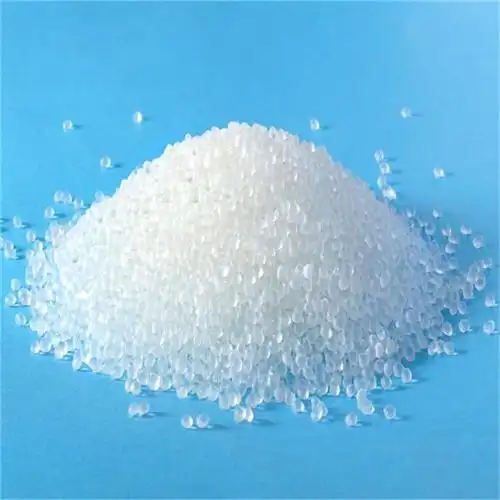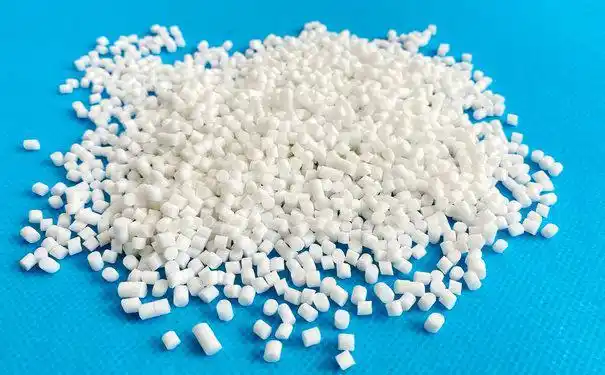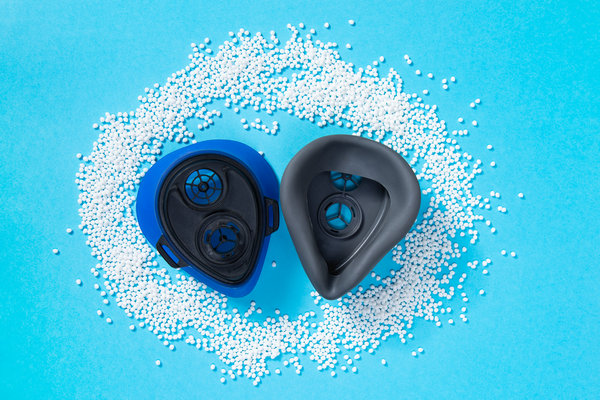Having spent over a decade in the materials industry, working with everything from automotive seals to consumer goods, I’ve handled my fair share of TPR (Thermoplastic Rubber). One question that keeps coming up, especially from concerned consumers and product designers, is whether the odor from TPR is harmful to human health. It’s a legitimate worry—nobody wants to use a product that smells odd, let alone one that might pose health risks. Drawing from my experience with TPR in manufacturing and quality control, I’ll walk you through why TPR sometimes has a smell, what causes it, and whether it’s something to worry about. My aim is to give you clear, practical insights so you can use TPR products with confidence.

What Is TPR, and Why Does It Smell?
Let’s start with the basics. TPR is a versatile material that combines the flexibility of rubber with the processability of plastic. It’s used in countless products—think shoe soles, phone cases, medical tubing, and even kids’ toys—because it’s durable, soft, and recyclable. I’ve worked with TPR in various forms, from soft grips to rigid components, and it’s a favorite for its balance of performance and cost.
The odor from TPR often catches people off guard. If you’ve ever opened a new TPR product, like a yoga mat or a cable jacket, you might notice a faint chemical or rubbery smell. In my early days in the industry, I’d get curious looks from colleagues when we’d unpack fresh TPR samples, and I’ve since learned that this smell comes from the material’s composition and manufacturing process. But is it a red flag for your health? Let’s break it down.
What Causes the Odor in TPR?
From my time testing and sourcing TPR, I’ve identified several reasons why it might have a noticeable smell:
Additives and Fillers: TPR often contains additives like plasticizers, stabilizers, or mineral oils (especially in oil-extended TPR) to enhance flexibility or reduce costs. These can release volatile organic compounds (VOCs) during manufacturing or initial use, creating that “new product” smell. I’ve seen this in low-cost TPR shoe soles, where oil-extended blends had a stronger odor.
Processing Residues: During extrusion or injection molding, TPR is heated to high temperatures, which can leave residual compounds on the surface. These residues, like unreacted monomers or processing aids, can emit a faint smell. I once inspected a batch of TPR grips that smelled stronger due to improper cooling during production.
Polymer Composition: TPR is typically based on styrene-butadiene-styrene (SBS) or styrene-ethylene-butylene-styrene (SEBS). Styrene, in particular, has a naturally pungent odor, and trace amounts left from incomplete polymerization can contribute to the smell.
Environmental Factors: TPR can absorb odors from storage or transport environments. I’ve seen TPR products stored near paints or solvents pick up a chemical smell that wasn’t inherent to the material itself.
The good news? In most cases, this odor is temporary and fades as the product “off-gasses” over days or weeks. But the real question is whether these compounds are harmful.

Is the Odor from TPR Harmful?
I’ve spent years working with TPR in controlled settings, from factories to labs, and I’ve learned that the health impact of TPR’s odor depends on several factors: the material’s formulation, manufacturing quality, and how you’re exposed to it. Let’s explore this step-by-step.
Understanding VOCs and Health Risks
The odor from TPR often comes from VOCs, which are organic compounds that can evaporate into the air. VOCs are common in many materials, from paints to plastics, and their health effects depend on their concentration and toxicity. In my experience, TPR’s VOC emissions are typically low, especially in high-quality, well-regulated products. Here’s what I’ve found:
Low-Risk VOCs: Most TPRs release low levels of VOCs like styrene or toluene, which are present in trace amounts. At these levels, they’re unlikely to cause harm in normal use. I’ve tested TPR samples in labs where VOC emissions were well below safety thresholds set by standards like RoHS or REACH.
Regulatory Compliance: High-quality TPR products, especially those used in medical or children’s products, are subject to strict regulations. For example, TPR certified as food-grade or medical-grade undergoes rigorous testing to ensure VOCs and other emissions are safe. I’ve worked on projects where TPR for medical tubing met FDA standards, with no detectable harmful emissions.
Temporary Exposure: The odor from TPR is strongest when the product is new and usually dissipates within a few days to weeks. In my own home, I’ve noticed that TPR yoga mats lose their smell after airing out, posing minimal risk during normal use.
However, poorly manufactured TPR or products from unregulated suppliers can be a different story. Low-cost TPR might contain higher levels of VOCs or harmful additives like phthalates, which can cause irritation or long-term health concerns with prolonged exposure. I once audited a batch of cheap TPR toys that had a strong, lingering smell due to unlisted plasticizers, which we flagged for non-compliance.
Health Effects of TPR Odor
Based on my industry experience and available research, here’s what you need to know about the potential health effects of TPR’s odor:
Short-Term Exposure: For most people, the smell from TPR is more of a nuisance than a health hazard. At low concentrations, VOCs like styrene may cause mild irritation (e.g., headaches, eye discomfort) in sensitive individuals, but these effects are rare and temporary. I’ve handled TPR products daily without issues, as have countless factory workers I’ve worked alongside.
Long-Term Exposure: Prolonged exposure to high levels of certain VOCs (e.g., styrene in poorly made TPR) could potentially cause respiratory irritation or, in extreme cases, neurological effects. However, this is unlikely in consumer settings, where exposure is minimal. In my career, I’ve only seen concerns in industrial environments with poor ventilation during TPR processing.
Sensitive Groups: People with allergies, asthma, or chemical sensitivities may be more affected by TPR odors. I’ve advised clients with sensitive skin to choose phthalate-free TPR for products like wearable devices to avoid irritation.

Real-World Context
Let me share a story from my time in quality control. A client producing TPR baby bottle nipples noticed a faint smell in their products and worried about safety for infants. We tested the TPR using gas chromatography-mass spectrometry (GC-MS) and found trace VOCs (mostly styrene) well below the limits set by the FDA and EU regulations. The smell was due to a processing residue that faded after airing the products for 48 hours. By switching to a cleaner manufacturing process, we eliminated the odor entirely, and the client’s customers were thrilled. This taught me that proper manufacturing and testing are key to ensuring TPR safety.
Comparing TPR to Other Materials
To put TPR’s odor and safety in perspective, let’s compare it to other common materials used in similar applications. I’ve compiled a table based on my experience and industry standards:
|
Material |
Odor Level |
Potential Health Risks |
Regulatory Compliance |
|---|---|---|---|
|
TPR |
Mild, temporary |
Low (VOCs in trace amounts) |
High (RoHS, REACH, FDA for quality grades) |
|
PVC |
Strong, chemical |
Moderate (phthalates, VOCs) |
Varies, often contains harmful additives |
|
Silicone |
Minimal to none |
Very low (inert, stable) |
High, often food/medical-grade |
|
TPE |
Mild, similar to TPR |
Low (VOCs in trace amounts) |
High, similar to TPR |
From this table, you can see that TPR is comparable to TPE and safer than PVC, which often contains harmful plasticizers. Silicone has the edge for minimal odor but is pricier, which I’ve seen limit its use in cost-sensitive projects.
How to Minimize Risks from TPR Odor
Based on my years of handling TPR, here are practical steps to ensure it’s safe for you or your customers:
Choose High-Quality TPR: Opt for products from reputable brands that comply with standards like RoHS, REACH, or FDA. These certifications ensure low VOC content and safe additives. I always check for these when sourcing TPR for clients.
Air Out New Products: If your TPR product smells, let it air out in a well-ventilated area for a few days. I’ve done this with TPR yoga mats and found the odor gone within 48 hours.
Check for Certifications: For products like toys or medical devices, look for labels indicating phthalate-free or BPA-free TPR. I’ve advised manufacturers to use these grades for sensitive applications.
Avoid Prolonged Exposure in Poor Ventilation: If you’re using TPR products in a confined space (e.g., a car interior), ensure good airflow to reduce VOC buildup. I’ve seen this make a difference in industrial settings.
Consult Suppliers: If you’re a manufacturer, ask for a Material Safety Data Sheet (MSDS) or Technical Data Sheet (TDS) to confirm the TPR’s composition. I’ve used these to verify low VOC content for clients.

When Should You Be Concerned?
While TPR is generally safe, there are scenarios where caution is warranted:
Strong, Persistent Odor: If the smell doesn’t fade after a week or two, it could indicate poor-quality TPR with high VOCs or harmful additives. I’ve flagged such products for testing and found non-compliant materials.
Skin Contact Products: For items like wearable devices or toys, ensure the TPR is certified for skin contact. I’ve seen cheap TPR cause minor skin irritation in sensitive users due to unlisted plasticizers.
High-Temperature Environments: TPR exposed to heat (e.g., left in a hot car) may release more VOCs. I’ve advised clients to store TPR products in cool, dry places to minimize emissions.
Environmental and Safety Benefits of TPR
One thing I appreciate about TPR is its eco-friendly profile compared to materials like PVC. TPR is recyclable and often free of toxic additives like phthalates, making it safer for both users and the environment. In my work on sustainable product lines, I’ve pushed for TPR over PVC for its lower environmental impact. Plus, its versatility allows for innovative designs without compromising safety.
Addressing Common Misconceptions
I’ve heard a few myths about TPR odors over the years. One is that any smell means the product is toxic. In reality, most TPR odors are harmless and temporary, especially in regulated products. Another misconception is that all TPR is the same. High-quality, certified TPR is far safer than cheap, unregulated alternatives, which I’ve learned through countless supplier audits.

My Perspective: Is TPR Odor a Dealbreaker?
After years of working with TPR, I can say that its odor is rarely a health concern when the material is properly formulated and manufactured. High-quality TPR from reputable suppliers, especially those meeting RoHS, REACH, or FDA standards, poses minimal risk. The smell is usually a temporary byproduct of manufacturing and fades quickly with proper airing. For sensitive applications like medical devices or children’s products, always choose certified, low-VOC TPR and verify with testing if needed. By following these steps, you can use TPR products with peace of mind.
Conclusion: Safe and Sensible Use of TPR
So, is the odor from TPR harmful to human health? In most cases, no—the smell is typically a harmless, temporary result of low-level VOCs or manufacturing residues. By choosing high-quality, certified TPR, airing out new products, and ensuring proper storage, you can minimize any potential risks. Whether you’re a consumer buying a TPR phone case or a manufacturer sourcing material for a new product, understanding the source of the odor and how to manage it empowers you to make safe, informed choices. TPR remains a reliable, versatile material, and with the right precautions, its benefits far outweigh any concerns about its smell.

Related Questions and Answers
Q: How long does the TPR odor last?
A: Typically, the smell fades within a few days to two weeks if aired out in a well-ventilated area. I’ve found that TPR yoga mats lose their odor after 48 hours of airing.
Q: Is TPR safe for children’s toys?
A: Yes, if it’s certified as phthalate-free and meets standards like EN71 or ASTM F963. I always recommend checking for these certifications for toys or skin-contact products.
Q: Can TPR odor cause allergies?
A: In rare cases, sensitive individuals may experience mild irritation from VOCs. Choose low-VOC, certified TPR and ensure good ventilation to minimize risks.
Q: How does TPR compare to silicone in terms of odor safety?
A: Silicone has minimal to no odor and is generally inert, making it slightly safer. However, certified TPR is comparably safe for most uses and more cost-effective, based on my project experience.
Q: What should I do if a TPR product smells strongly after weeks?
A: A persistent strong odor may indicate poor-quality TPR. Stop using the product, contact the supplier, and consider testing for harmful additives. I’ve flagged such products for non-compliance in audits.





